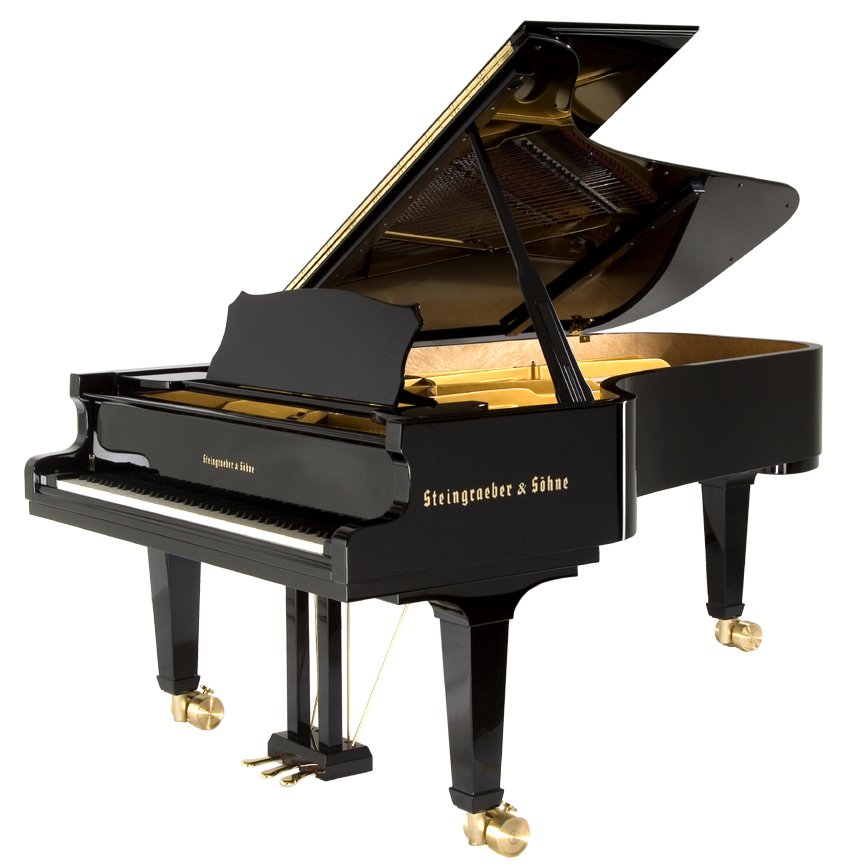Steingraeber Kammerkonzertflügel C-212
The C-212 was introduced at the beginning of 2009 and is a direct descendant of the 1873 Steingraeber Liszt Grand Piano Model 205. We have recently adapted it to the dynamic requirements of the 21st century. However we have also preserved the chamber-music appeal of the 205, which, for 140 years, has captivated pianists from Franz Liszt and Richard Strauß to Daniel Barenboim.
The C-212 was introduced at the beginning of 2009 and is a direct descendant of the 1873 Steingraeber Liszt Grand Piano Model 205. We have recently adapted it to the dynamic requirements of the 21st century. However we have also preserved the chamber-music appeal of the 205, which, for 140 years, has captivated pianists from Franz Liszt and Richard Strauß to Daniel Barenboim.
The C-212 was introduced at the beginning of 2009 and is a direct descendant of the 1873 Steingraeber Liszt Grand Piano Model 205. We have recently adapted it to the dynamic requirements of the 21st century. However we have also preserved the chamber-music appeal of the 205, which, for 140 years, has captivated pianists from Franz Liszt and Richard Strauß to Daniel Barenboim.
Due to its precisely-differentiated characteristics, rich sound spectrum and even registers, the C-212 is frequently used for song recitals, chamber music, New Music concerts, and, needless to say, at universities of music (for example Hannover, Helsinki, Lucerne and Paris).
Special Features
Sound-reflecting casing wall, straight form in the rear
Particularly sonorous discant resulting from:
Precise high-frequency dimension of the treble-range soundboard
Treble backstrings constructed using ‘Mischklang’ (unified sound) principle
Sound bridges on the capo d’astro barsh
Induction-hardened capo d’astro bars
2 frame flanges in the treble region for extra tension
Hardened bridge pins in nickeled iron
Agrafes hardened by steel pins
Perfect touch
Fast responding keys (20 % more upweight)
Sharps 1 g lighter than white keys
Reliable key tops without aquaplaning
Frame design without hindering cross braces for techniques for Contemporary music
Responding touch by aluminium action rails with wooden fillings
Steingraeber Grand Pianos Comparison
D272, C212, A170 - October 2021
More information on Steingraeber’s website
References
Belfort (Frankreich) Conservatoire neuer Kammermusiksaal 2015
Dresden Hochschule für Musik
Essen Folkwang Universität der Künste
Hannover Hochschule für Musik
Helsinki (Finland) Sibelius Akademie
Karlsruhe Hochschule für Musik
Linz (Austria) neue Anton Bruckner Privatuniversität
Łódź Academy (Poland)
Luzern (Switzerland)
Hochschule für Musik
Munich Hochschule für Musik
Stockholm (Sweden) Royal Swedish Academy
Vienna (Austria) Musikuniversität



















